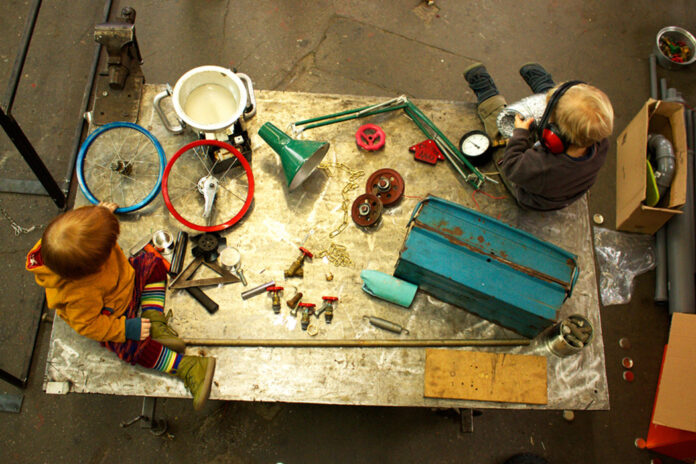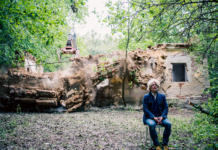
How do we want to live if we might live as we want to in a foreseeable future? What has already changed as a result of the pandemic? And what would we change? Also in the field of culture.
A few days after the first lockdowns were imposed in Europe, the first futurologists have already thrown their forecasts and prospects for the time after the pandemic onto the market in a race for future topic leadership. In March 2020, Matthias Horx predicted what „the world after Corona“ would look like in the fall of the same year: We would have begun to love long-term phone calls without second screens. We would be „really“ communicating with each other. People would be polite enough not to keep anyone waiting to answer their mails and would be happy to be reached at anytime without an „answering machine“. Reading books would have become a cult again and political correctness discourse would be passé. People would act in solidarity and constructively. We would be amazed at the amount of humor and humanity that the virus would have brought us in our dealings with one another. Stock market values would have halved, but that wouldn‘t matter because good neighbourhood relations and vegetable gardens would have become more important again.
The guild of futurologists like Horx likes to package their predictions in well-marketable, crisp-sounding labels: „RE-Gnosis: Coping with the Present by Leaping into the Future,“ „Future-Mind-Future-Awareness.“ This appeals to corporate executives, venture capital investors or well-financed think tank managers who have to fill their lobby group‘s next salon program with event dates before the cigar rounds that follow. Whether serious or practical jokes, we‘d better return to the pre- sent of early 2021 and try to take stock.
The basic parameters are well known:
Globally: The climate is heating up. Resources are becoming scarce. Economic growth does not go on indefinitely. The population is getting older in the industrialized nations. Not elsewhere. Artificial intelligence is turning the labor market upside down and full employment was 20th century. Digital surveillance is becoming more and more seamless, the concept of basic civil liberties and the idea of liberal parliamentary democracy are on the defensive. Human rights anyway. The Gini index is rising. Worldwide.
Locally: The oligopoly-like online trade is emptying the first floor zones of the city centers. And the ugly tin cans of the shopping centers in the suburban deserts along with them. In the 20th century, the living space was adapted to the car, and the urbanized and disfigured landscape causes eye blee- ding. 80 cm of sidewalk width remained for the people. And their pets. The multiculturally shaped cities find themselves in multi- layered socio-political culture wars on which populists surf like on a wave and thus fuel them even further. The educational system of the cities no longer reaches the young people of this fragmented society properly and produces masses of educationally disadvantaged youth.
And: We no longer look each other in the eye. Instead, we look into our smartphones or tablets.
So how do we want to live? Not like this.
But instead of leaving it to futurologists or prophets to make indicative statements about a desirable future, which we would only have to chase after from the present, Graz took a different approach as part of the „Graz Kulturjahr 2020“:
They asked.
Not futurologists, statisticians or investors. But artists, cultural workers, creatives and humanities scholars.
„How do we want to live?“ was the title of the program call for „Graz Kulturjahr 2020“, which has now been extended into 2021 due to the Corona lockdowns.
The call was for reflections, considerations, drafts and ideas on the future of cities and the people who live in them. For local design possibilities, embedded in the framework of their global conditions. For the big issues in local reality: social coexistence, digitization, climate change: How do we want to live and what can we do?
WHAT ROLE CAN ART AND CULTURE PLAY IN CRISIS MANAGEMENT?
„Art was often perceived by many as something elitist on the fringes of society. Today, much more often than in the past, we speak of artistic ideas that become social ideas,“ says Christian Mayer, program manager of the „Graz Kulturjahr 2020“.
The projects developed for the program do not formulate predictions, but offer ideas, perspectives, criticism and suggestions for action. Margarete Makovec and Anton Lederer of the Graz-based art association <rotor> have been involved in an area of interaction between art, public space and social discourse for many years with their art projects. For the Graz Kulturjahr 2020, they have, among other things, conceived the project „Schule des Wir“.
„Artists often recognize things and connections that are still latent and not immediately visible. They often take on the role of a seismograph. Formulate an expanded thinking space and also criticism. In many of the projects we do, we also try to bring this into the public space that immediately surrounds us. Because then art becomes re- ally interesting. When it also succeeds in directly and locally creating a direct involvement of the people.“ Says Margarete Makovec. „Graz has a high level of education. There are many people interested in art and culture. By stepping into the public space, we generate involvement and public discourse. This is incredibly important, especially at a time when society is breaking down into increasingly isolated social bubbles. And in multicultural neighborhoods like Lend or Gries in Graz, there is a very special potential.“
Of course, thematic calls with targeted thematic questions announced by cultural policy always run the risk of being perceived by artists as an attempt of political instrumentalization. Günter Riegler, City Council for Culture in Graz, is also aware of this: „Issuing an order will not work. But we can approach artists with questions. That was also the idea behind the call for the „Graz Kulturjahr 2020“. We asked questions about the big issues of the future: Climate change. Digitalization. New worlds of work. We invited people to look forward for us with the means of art. And not primarily backwards. Art and culture can open up new perspectives for us, but as a cultural politician I am well aware that art cannot be instrumentalized.“
Politicians were also held up to scrutiny: the „Neigungsgruppe K.O.“ with Johanna Hierzegger, Markus Wilfling and Martin Behr wanted to distribute 7.000 pepper sprays among the population to raise the question: „How much security can the city take? Actress Pia Hierzegger and ex-Caritas director Franz Küberl had made themselves available as poster testimonials for the project. The associated socio- political discourse about the stoking of fears, the surveillance justified by these generated fears and the associated successively more and more extended restrictions on basic civil liberties and privacy was, however, abruptly reversed by the outbreak of the pandemic. The focus was now not on the democracy-restricting dimension of the security debate, which had been pushed mainly by populists in previous years, but on consideration for the health of those closest to us. The „Neigungsgruppe K.O.“ therefore completely redesigned its project: 7,000 pepper sprays became 5,000 disinfectant sprays. The artists‘ collective has renamed itself „Neigungsgruppe O.K.“.
At the same time, those who only a short time ago pushed a surveil- lance law package through parliament only to fail before the Constitutional Court are now leading the demonstrations of that amalgam of Corona irrationalists who see only the dimension of a restriction of fundamental rights in the pandemic control measures. The fact that the necessary discourse on the subject of security and civil liberties has by no means been conducted in a necessarily objective and differentiated form is made particularly clear by this role reversal and the chanting inability to engage in dialogue with which the various population groups confront each other.
In this heated climate, art projects such as „5,000 Disinfectant Sprays“ offer a „nudging“ for an urgently needed discourse among the popu- lation, in which people might once again listen to one another.
Of course, this increased outreach of art and culture into sociopolitical discourse is not a new phenomenon. But it has been given new roles and tasks by smartphones, streaming offerings, social media, and the associated erosion of social encounters in the real world.
In this context, Christian Mayer also sees new tasks for established cultural institutions such as museums: „In general, the perception of art and artistic things has changed fundamentally in recent de- cades. Art no longer has the smell of an „Ivory Tower“ so strongly, but is much more accessible and touchable in everydays life. This can also be seen in the museum sector, where England in particular has shown us a lot and set an example: Museums and the art presented there are not self-contained. Public museums are largely free – i.e., with free admission – and thus much more a part of people‘s everyday lives. At the same time, one also observes an expansion of the concept of art more and more towards the socio-political role of art. This continues in the field of art education, where curators and education teams are increasingly thinking and working in a transdisciplinary context. In other words, we can observe a mutually influencing process of change here, driven both by a change in society‘s relationship to the art business and, conversely, by a change in the art business itself with an increased attention to sociopolitical issues. In the process, digitization is also dissolving old boundaries between different sectors at great speed.
Today, we can engage online at any time with any topic that is of interest to us. Netflix etc. are available around the clock. So why should I have to deal with the limited opening hours of local museums, for example, when what interests me is also available elsewhere at 10 or 11 p.m. – when I have the time and the inclination. Inclusive access to culture is also still a major task for the coming years,“ says Mayer.
But it is not just a question of reshaping access to art and culture and breaking down the barriers that still exist, which has become the order of the day for all cultural institutions if they can gradually reopen their doors toward the end of the pandemic. It is also necessary to look closely at the silent and invisible erosion process that the pandemic has already caused in the cultural fabric of a city and how best to respond to it.
„If a musician is without performance and earning opportunities for a year, then she has to look for something else to survive“, Margarete Makovec sees the current situation realistically. „But the question is: What does a city lose if it loses artists and creative people along the way?“
A problem that has now also been recognized in politics. „We are already seeing changes in the cultural scene as a result of the crisis. Artists who have lived precariously in the past are now training as nurses, for example. So the pandemic is already changing the cultural fabric of the city. And the question is, should we just let these changes happen or should we intervene in a controlling way?“ asks Günter Riegler, City Council for Culture in Graz.
Many artists today are active in broadly diversified fields of action between art, applied art and socially critical fields of action with an often multiple understanding of their roles. This is not only because they create better opportunities for themselves to earn a living, but often above all because the topics and concerns they deal with can be dealt with more effectively in these fluid transfer zones between art, culture, business, media and society. The debate about the freedom of art and its demarcation from application-oriented forms of artistic-creative work has gained new dimensions, especially through the digitalization of all areas of life.
For Wolfgang Skerget, the head of the office Graz – UNESCO City of De- sign, it is especially important in this context that a city offers structures that always leave enough purpose-free space for experimentation. In this context, Skerget refers to Joseph Beuys, who would have turned 100 years old this year: „Decades ago, he already outlined many developments that have gained a general presence today – especially through social media. His Fluxus actions anticipated much of what we can see thousands of times a day today on all social channels. Art has always had the role of seismographically recognizing developments at an early stage and putting them up for debate“ emphasizes Skerget. „In this context, I therefore find it exciting and important to continuously expand and strengthen the connection between art and culture on the one hand and the more application-oriented areas of design on the other. If we want to constructively shape – i.e., „design“ – our environment, our everyday life and our coexistence, then we first always need visionaries, artists who look ahead, experiment and investigate without already being subject to the dictates of purpose and usability. Art can thus be a driver that triggers dynamics that are carried on by others in a formative way.“
The loss of real social contacts in the physical world, driven precisely by the digitization of society, has been further dynamized by the Corona crisis. Christian Mayer sees this as a great potential opportunity for the cultural sector: „In this context, both digitization and the Corona crisis are once again bringing an aspect to the forefront that, in my view, opens up new potential opportunities for artists, cultural workers and also museums in particular. Namely, the aspect of the specific for the respective place and for the
respective house. Before Corona, „world art“ was shipped around en masse and set up as a tourist magnet in the form of assembled blockbuster exhibitions. In recent months, this has no longer worked due to Corona. The curators began to take a closer look at their own collections and were sometimes quite surprised at the treasures that could be found there. And I think to myself – quite fundamentally: perhaps that is the order of the day. Even in a sustainable way. That we first work out of our local framework conditions with our cultural concepts and thus, on the one hand, make creative spaces possible for local artists and, on the other hand, secure culture as a real experience for people. Do things that can be physically seen and experienced here and only here. For which there is an actual reason for the here and now. After all, we live today in the awareness that we can get everything digitally on our cell phones from anywhere at any time. And that‘s precisely why it no longer has any real meaning for us.
Mayer is therefore convinced: „The future of culture probably belongs to real things in real life again.“
Graz Kulturjahr 2020
Graz Inklusiv
New, inclusive ideas for Graz’s cultural program
20.08.2020 – 28.05.2021
Various locations
kulturjahr2020.at/projekte/kulturinklusiv
Der Grazer Kunstverein zieht um
City and site research across Graz
2020/2021
Various locations
kulturjahr2020.at/projekte/der-grazer-kunstverein-zieht-um
Graz Backstage
Past, present and future of infrastructure
Various locations
20.12.2020 – Oktober 2021
kultujahr2020.at/projekte/graz-backstage
Aus dem Schatten des Wasserturms
Get to know the old home anew through interventions
20.03.2020 – Juli 2021
Various locations
kulturjahr2020.at/projekte/aus-dem-schatten-des-wasserturms
Klima-Kultur-Pavillon
Fresh air oasis, in the middle of the city
28.04. – 15.08.2021
Freiheitsplatz
kulturjahr2020.at/projekte/klima-kultur-pavillon
Re_start_#Graz2020
Art as an intercultural bridge builder
29.04. – 20.06.2021
Verein Jukus
Jukus.at/restart
wORTwechsel
Places of the city are explored in a literary way
22.04. – 24.06.2021
Various locations
kulturjahr2020.at/projekte/wortwechsel
transletter
Three editorial teams publish multilingual special edition in newspaper format
Juli 2021
Schlossberg
kulturjahr2020.at/projekte/transletter
Utopia Square
Sustainable development goals as performance
14.06. – 30.06.2021
kulturjahr2020.at/projekte/utopia-square
Classroom on stage
Personality development in the Digi Lab
08.06. – 02.07.2021
Mittelschule St. Leonhard
kulturjahr2020.at/projekte/future-classroom-on-stage
All information at kulturjahr2020.at











